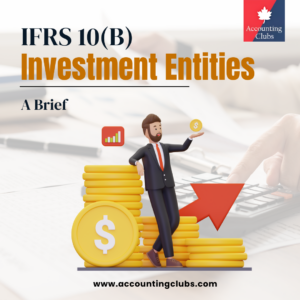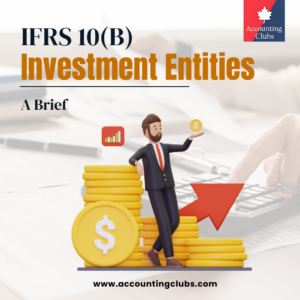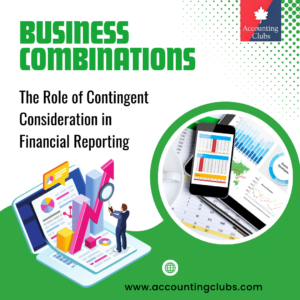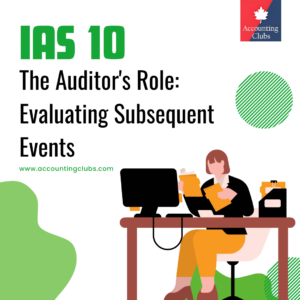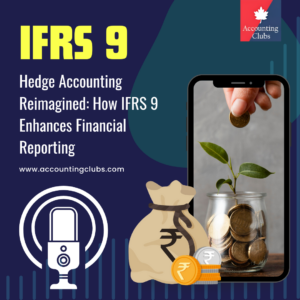Chapter 5: Financial Statements
Consolidated financial statements
Related party transactions and outstanding balances with other entities in a group are required to be disclosed. Such intragroup transactions and outstanding balances are, however, eliminated on consolidation, except for those between an investment entity and its subsidiaries measured at fair value through profit or loss.
IAS 24 contains no specific exemptions for intragroup transactions in consolidated financial statements. When intragroup transactions and outstanding balances are eliminated, they do not form part of the consolidated financial statements; consequently, such related party transactions and outstanding balances between group members are not disclosed under IAS 24.
Intragroup-related party transactions between an investment entity and its subsidiaries measured at fair value through profit or loss are not eliminated in the preparation of the consolidated financial statements of the group.
Accordingly, transactions and outstanding balances between an investment entity and its unconsolidated subsidiaries are required to be disclosed under IAS 24.
Separate and individual financial statements
When a parent or investor presents separate financial statements by IAS 27, IAS 24 applies equally to those separate financial statements. IAS 24 also applies to individual financial statements.
There are no exemptions available to subsidiaries in respect of transactions and balances with other group entities. Related party transactions and outstanding balances with other entities in a group are disclosed in an entity’s separate or individual financial statements.
Directors’ investments and ownership
The director owns shares in a customer of the group
A parent has a wholly-owned subsidiary. One of the subsidiary’s directors is the majority shareholder of an otherwise independent third-party entity that sells goods on normal commercial terms to the subsidiary. The director is a member of the subsidiary’s key management personnel. How should transactions with the supplier be presented in: a. the subsidiary’s financial statements; b. the consolidated financial statements; and c. the financial statements of the entity that sells the goods?
(a) The subsidiary’s financial statements
The supplier is a related party of the subsidiary, because the director controls the supplier and, as a key manager, has influence over the subsidiary. The subsidiary’s financial statements should disclose information related to the purchase of goods from this supplier, as well as the nature of the relationship between the subsidiary and the supplier.
(b) The consolidated financial statements
The parent’s management should disclose the information set out under (a) above in the consolidated financial statements if it is determined that the director of the subsidiary is a member of the group’s key management personnel.
(c) The financial statements of the entity that sells the goods
The subsidiary’s director, as the majority shareholder, is a related party of the supplier. The subsidiary is a related party of the supplier because the director is a member of key management personnel at the subsidiary, and he controls the supplier. Disclosure would be required of sales made to the subsidiary, as well as the nature of the relationship with the subsidiary.
The director controls a trust
Mr X, a director of entity Y, has a controlling interest in a trust. The trust is a related party of entity Y because it is controlled by Mr X, a director of entity Y. It might be difficult to determine whether Mr. X has a controlling interest in the trust because trustees are generally legally obliged to act in the interests of beneficiaries, but the substance of the arrangement might be that Mr. X has control.
The director is a trust beneficiary
Mr X owns 95% of Entity A and is its director. He is also a beneficiary of a trust that owns 100% of entity B, of which he is a director. Entities A and B are related parties because the director (Mr. X) controls Entity A and is a member of the key management personnel of Entity B.
Would the situation be different if?
- Mr X resigned as a director of entity A, but retained his 95% holding.
Mr X continues to control entity A through his 95% holding even though he is not (nominally) a director of the entity. Entities A and B are related if Mr. X controls the trust. Mr X controls entity A and also, through the trust, controls entity B. Entities A and B are controlled by the same person, and so they are related parties. Mr X might still be a member of ‘key management personnel’ even though he is not (nominally) a director of entity A.
Key management personnel include, but are not restricted to, directors, which include those who are executives ‘or otherwise’ provided they have authority and responsibility for planning, directing, and controlling the activities of the entity. There could be two reasons why entities A and B would continue to be related parties: Mr. X being a member of ‘key management personnel’ of entity A and Mr. X controlling entity A.
- Mr X resigned as a director of entities A and B and transferred the 95% holding in entity A to the trust.
If Mr X controls the trust, he controls entities A and B through the trust, so they will be related parties (see reasons in (a) above). Mr X is a member of the ‘key management personnel’ of the two entities (see (a) above) if, as seems likely, he continues to direct their operating and financial policies. The substance of the relationship and not merely the legal form should be considered.
If Mr X is regarded as a member of the key management personnel of, say, entity A, entity B is a related party, because he exercises control or significant influence over entity B by virtue of his control over the trust.
Post-employment plans of a related party outside the group
The wife of a member of entity A’s key management personnel has 70% of the voting power in entity B, and controls entity B. Entity A transacts with the pension fund set up for the benefit of all employees
of entity B. Should entity A disclose these transactions
Government-related entities
A reporting entity is exempt from the disclosure requirements in relation to related party transactions and outstanding balances, including commitments, with:
(a) a government that has control or joint control of, or significant influence over, the reporting entity; and
(b) another entity that is a related party because the same government has control or joint control of, or significant influence over, both the reporting entity and the other entity.
If a reporting entity applies the exemption, it shall disclose the following about the transactions and related outstanding balances:
(a) the name of the government and the nature of its relationship with the reporting entity (i.e., control, joint control or significant influence);
(b) the following information in sufficient detail to enable users of the entity’s financial statements to understand the effect of related party transactions on its financial statements:
(i) the nature and amount of each individually significant transaction; and
(ii) for other transactions that are collectively, but not individually, significant, a qualitative or quantitative indication of their extent.
In using its judgement to determine the level of detail to be disclosed, the reporting entity shall consider the closeness of the related party relationship and other factors relevant in establishing the level of significance of the transaction such as whether it is:
(a) significant in terms of size;
(b) carried out on non-market terms;
(c) outside normal day-to-day business operations, such as the purchase and sale of businesses;
(d) disclosed to regulatory or supervisory authorities;
(e) reported to senior management;
(f) subject to shareholder approval.
Government-related entities
A reporting entity is exempt from the disclosure requirements set out in IAS 24 in relation to related party transactions and outstanding balances (including commitments) with:
- a government that has control or joint control of, or significant influence over, the reporting entity; and
- another entity that is a related party because the same government has control or joint control of, or significant influence over, both the reporting entity and the other entity.
When a reporting entity applies the exemption in IAS 24, some disclosures are still required to meet the objective of IAS 24.
The following example, taken from the illustrative examples accompanying IAS 24, illustrates the application of the partial exemption.
Example
Partial exemption for government-related entities
Government G directly or indirectly controls Entities 1 and 2 and Entities A, B, C and D. Person X is a member of the key personnel of Entity 1.
For Entity A’s financial statements, the exemption in IAS 24 applies to:
- transactions with Government G; and
- transactions with Entities 1 and 2 and Entities B, C and D.
However, that exemption does not apply to transactions with Person X.
Government
IAS 24 includes a definition of ‘government’ for the purposes of the partial exemption from the disclosure requirements of IAS 24 for government-related entities. Government refers to government, government agencies and similar bodies whether local, national, or international. This definition is identical to the one used in IAS 20.
Government-related entity
A government-related entity is an entity that is controlled, jointly controlled, or significantly influenced by a government.
Government-related entities
A reporting entity is exempt from the disclosure requirements in relation to related party transactions and outstanding balances, including commitments, with:
(a) a government that has control or joint control of, or significant influence over, the reporting entity; and
(b) another entity that is a related party because the same government has control or joint control of, or significant influence over, both the reporting entity and the other entity.
If a reporting entity applies the exemption, it shall disclose the following about the transactions and related outstanding balances:
- (a) the name of the government and the nature of its relationship with the reporting entity (i.e., control, joint control or significant influence);
- (b) the following information in sufficient detail to enable users of the entity’s financial statements to understand the effect of related party transactions on its financial statements:
(i) the nature and amount of each individually significant transaction; and
(ii) for other transactions that are collectively, but not individually, significant, a qualitative or quantitative indication of their extent.
In using its judgement to determine the level of detail to be disclosed, the reporting entity shall consider the closeness of the related party relationship and other factors relevant in establishing the level of significance of the transaction such as whether it is:
(a) significant in terms of size;
(b) carried out on non-market terms;
(c) outside normal day-to-day business operations, such as the purchase and sale of businesses;
(d) disclosed to regulatory or supervisory authorities;
(e) reported to senior management;
(f) subject to shareholder approval.

